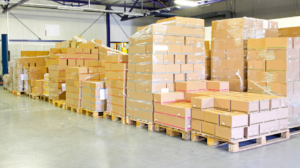Food Delivery Apps Are Drowning China in Plastic
The growth of food delivery apps in China has significantly increased the use of single-use plastic bags, utensils, and take-out containers. The recycling system is struggling to keep up, causing most of this plastic to enter the disposal stream.
Authors: Raymond Zhong and Carolyn Zhang
BEIJING — In all likelihood, the enduring physical legacy of China’s internet boom will not be the glass-and-steel office complexes or the fancy apartments for tech elites.
It will be the plastic.
The astronomical growth of food delivery apps in China is flooding the country with takeout containers, utensils and bags. And the country’s patchy recycling system isn’t keeping up. The vast majority of this plastic ends up discarded, buried or burned with the rest of the trash, researchers and recyclers say.
Scientists estimate that the online takeout business in China was responsible for 1.6 million tons of packaging waste in 2017, a ninefold jump from two years before. That includes 1.2 million tons of plastic containers, 175,000 tons of disposable chopsticks, 164,000 tons of plastic bags and 44,000 tons of plastic spoons.
Put together, it is more than the amount of residential and commercial trash of all kinds disposed of each year by the city of Philadelphia. The total for 2018 grew to an estimated two million tons.
People in China still generate less plastic waste, per capita, than Americans. But researchers estimate that nearly three-quarters of China’s plastic waste ends up in inadequately managed landfills or out in the open, where it can easily make its way into the sea. More plastic enters the world’s oceans from China than from any other country. Plastic can take centuries to break down undersea.
Recyclers manage to return some of China’s plastic trash into usable form to feed the nation’s factories. The country recycles around a quarter of its plastic, government statistics show, compared with less than 10 percent in the United States.



